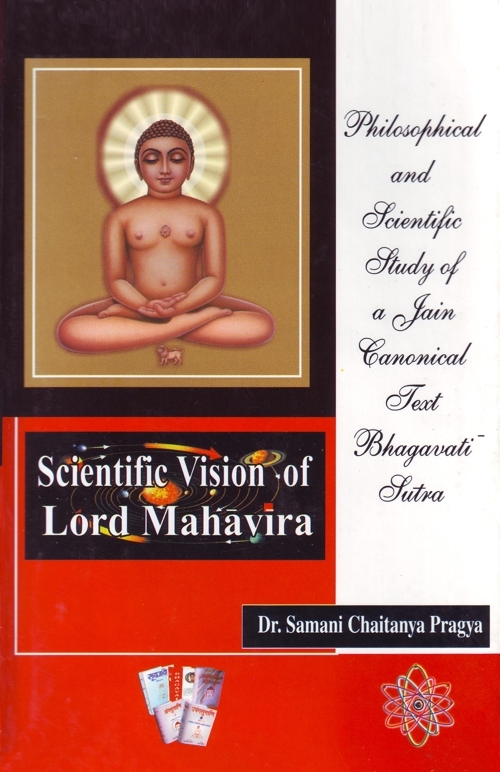Time in Jainism: A General Review
Anindita Niyogi Balslev in her book 'A study of Time in Indian Philosophy' has made a good endeavor to study the problem of time in Indian philosophy. Here, only a review of the study about Jainism is being given as follows:[52]
A survey of philosophical and theological thinking, pertaining to the problem of time, reveals a continued search for greater clarification and understanding, involving different approaches and methods, and consequently resulting in widely divergent philosophical formulations.
It is evident that a study of such fundamental problems as that of time cannot be isolated and disconnected from other major philosophical issues of a specific system in a given tradition. It is interrelated and interwoven with such basic concepts as those of being and becoming, change and causality, creation and annihilation.
The metaphysical stand of Jainism, known as Non-absolutism, is, as the term designates, an attempt to construct a conceptual structure that makes room for a many-sided view of reality. It aims at formulating a conception of reality, which can accommodate identity and difference, permanence and change. It, therefore, seeks to avoid such views that are extreme and onesided, which either emphasize the reality of the ultimate identity at the exclusion of change or maintain the reality of perpetual change at the price of identity. The system of Advaita Vedānta, for example, represents the former and Buddhism the latter, which Jains designate as extreme views technically known as Dravya-ekāntavāda and Paryāya-ekāntavāda respectively.[53 ]Jainism seeks to avoid these extreme views and puts forward a comprehensive philosophical position as a metaphysical reconciliation.
The Jain attempt to avoid these extreme, one-sided views gave rise to a distinct conception of the real, which is found in the canons[54] and formulated by Umāsvāti in his Tattvārthasūtra[55] as origin, decay and permanency are the characteristics of the real. This definition of the real is expressing the Jain conception that allows for difference (change) and yet, maintains an underlying identity (permanence). This becomes even clearer when one notes the conception of substance that plays an important role in Jain metaphysics.
The Jaina metaphysical system is one of the realistic pluralism. The two important terms that occur throughout the Jain philosophical literature, are dravya (substance) and Astikāya (extended real).[56] It is only through our understanding of these concepts that we can grasp the distinct Jain formulation of the problem of time.
Achary Umāsvāti defines substance as that which is possessed of qualities and modes.[57] To talk about a substance without qualities and modes or vice versa is merely an intellectual abstraction, which does not do justice to reality. The system lists six substances as ultimate real, of which one is time. The various principles that are employed to classify the substances according to their characteristics focus on the Jain view of time along with its similarities with and differences from other substances. The six substances, listed as metaphysically real, are—the soul/the conscious substance, matter, and the medium of motion, the medium of rest, space and time.
Of the six five substances except time are called Astikāya. Astikāya are the substances which are composed of small units or in principle at least capable of being mixed up.[58]
Though time is of atomic nature[59] but the characteristic of the time-atoms is such that they remain distinct and can never be mixed up.[60] This is brought out by saying that time has only one unit, i.e. the time-atoms can never be combined. This explains why time cannot be classified as Astikāya. This, again, is a clear way of indicating the difference between the atoms of space, matter, etc. from that of time.
An important understanding pertaining to the time-atoms is discussed in the Jain text.[61] There it is pointed out that time has no corpus (kāyatva) or extension, it is generated by such an arrangement that the time-atoms can constitute a moni-dimensional series which is unilateral. This is what in Jain terminology is called ūrdhva pracaya e.g. multi- dimensional series of vertical extension as opposed to the tiryak pracaya i.e. a multidimensional series of horizontal extension.[62] A Chakravarti writes in his 'Philosophical Introduction' to Pancāstikāyasāra as follows:
"...when the simple elements, say the points, are so arranged in a series, where each term is an item also in another series, we must have the two-dimensional series, which will correspond to surface or extension. Wherever there is such a tiryak pracaya we have astikāya. But time has only ūrdhva pracaya. The elements are in a forward direction..."[63]
The Jain understanding specially of Digambara tradition of the timeatoms (kālāṇu) as ultimate,[64] absolute and eternal, again points to its distinction from the conventional i.e. common-sense time (vyavahāra kāla). The conventional time-periods, of which we find a long list in the Bh.S[65] ranging from the last unit of time technically called samaya (instant) tośīrṣaprahelikā, the largest unit of numerable time.
It is obvious that these distinctions of conventional time-periods are made possible only with the help of some extraneous factors. The units of measurement are generally based on some changes in the physical world, such as, the motion of the sun and the moon.[66] This is why conventional time is never unconditional but dependent on other outside factors. The absolute time is unconditioned (paramārtha kāla), true (niścaya kāla) and real (dravya kāla).[67]
The conventional time presupposes the absolute time. In the Digambara Jain text the absolute time is described not only as a real existent but also as being potent, i.e. it brings about changes in the other substances.[68] Birth, growth and decay of things are subject to its influence.
The absolute time, consisting of instants, is conceived as beginningless and endless, whereas conventional time has both. This brings into light an important feature of the Jain understanding of time, i.e., the instants arranged unilaterally are conceived as permanent (nitya).[69] Jains agree with the other atomic views of time[70] (Yoga and Buddhist views) in maintaining that no two instants can be found simultaneously.[71] Here, the imperishable does not mean that no instant will perish at all but instant will be present at every moment. This is well known that every instant is coming into existence in one moment and passing away in the next moment. Nevertheless, it is eternal. It implies that the flow of instant will continue forever. It is running from the past unknown to the endless future. Time is eternal for Jain, as the Vaisheshika philosophers held it to be, but the difference between them is glaring. The Vaisheshika[72] view of one ubiquitous time is found to be untenable while the Jains propound an atomic,[73] plural view of time instead. The Jain conception of the absolute time is to be contrasted to the idea of time as appearance. Time, to the Jain thinkers, is a substance, having an ultimate status in the pluralistic metaphysics of the system. No modification in the universe can be conceived without time.[74]
It is significant that Jainism with its realistic framework of thinking accepts the reality of change which, in turn, points to the reality of time.To deny the reality of time is tantamount to the dismissal of all changes involving birth, growth, decay or motion. It is precisely this position that is avoided by maintaining the reality of time.
The absolute time-atoms are conceived as co-terminus to the cosmic space, the instant having no extension of volume. In other words, there can be no question of simultaneous moments, the time series consisting of timeatoms is always to be understood as successive.
The different principles classifying the substances in distinct groups are as indicated in the second chapter, a source of our knowledge about the Jain idea of time. The substances are classified as physical and non-physical.[75] Physical means the substance that is endowed with sense-qualities, such as, touch, taste, smell, colour, sound etc. This is why time cannot be the subject of sense perception. It can be known through inference.
Again, according to another principle of classification, on the basis of which a substance can be said to have consciousness, we find that soul alone is singled out as conscious. All the other substances including time are listed as non-conscious.[76]
These are the main ideas about time that can be traced from the original Jain texts. The Bh.S' conception of time is documented in an illuminating discussion that will now be taken up. The text refers to both the concepts of time, absolute as well as conventional. The thing worth noticing is that unlike the Digamber view of time, it never mentions that there are actually innumerable time atoms that are co-tremens to the cosmic space. According to it, the absolute time is momentary and applies everywhere. It is not different from the sentient and insentient entities. It causes all the changes going on every moment in each object.
 Dr. Samani Chaitanya Pragya
Dr. Samani Chaitanya Pragya

